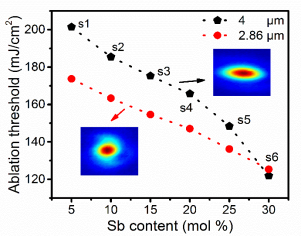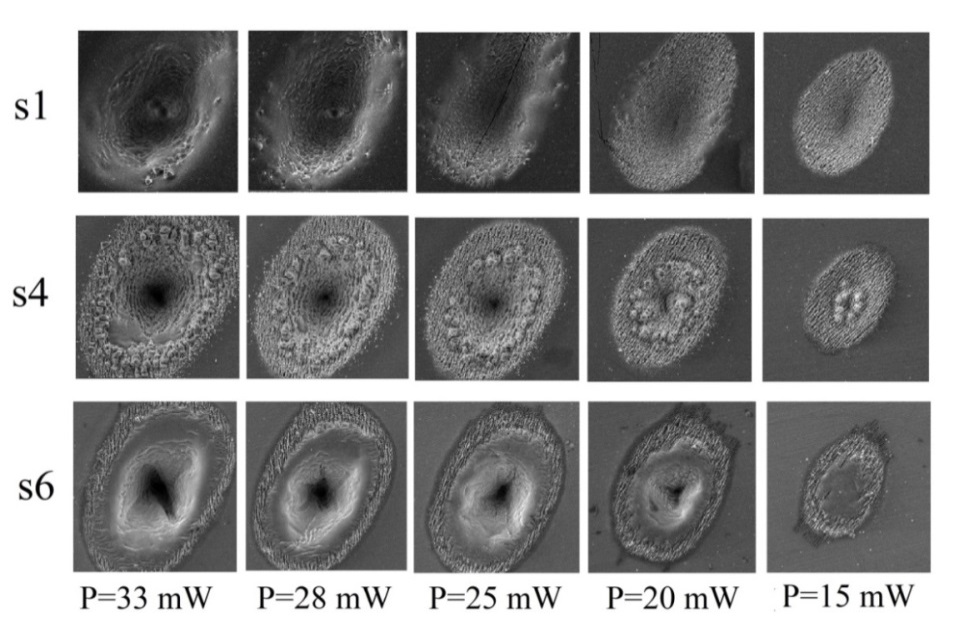
Correlation between ablation threshold and Sb concentration at the wavelength of 2.86 μm and 4 μm of Ge11.5SbxSe88.5-x glasses samples.
Xie, M., Dai, S*., et al. J. Phys. Chem. C 122, 1681-1687 (2018).
Read more:
Micro-nano optical devices, such as nano-gratings, photonic crystals based on chalcogenide fibers or waveguides, which were achieved by the interaction of chalcogenide glasses with femtosecond laser pulses, have attracted widely attention in the field of international photonics. However, most reports have focused on the damage of As-based chalcogenides glass irradiated by femtosecond laser in the near-infrared region.
Recently, Xie Min and Prof. Shixun Dai et al. investigated the role of structure and water peak absorption of Ge-Sb-Se chalcogenide glasses in determining the femtosecond laser ablation thresholds (Fth). A series of Ge11.5SbxSe88.5-x (x=5, 10, 15, 20, 25, 30) chalcogenide glasses labeled as s1 to s6 were fabricated and optical absorption properties, network compactness, structural characteristics, femtosecond laser ablation characteristics were studied subsequently. Ablation of the sample disks was performed with repetition rate ultrashort laser pulses (150 fs, 1 kHz) at different wavelengths (2.86 μm, 4 μm) with a decreasing laser power. The optical band gap of glass samples decreases, while that of the hardness and average bond energy increase with increasing Sb concentration. As Sb atoms gradually replaced Se atoms, the glass samples follow a similar decreasing trend in ablation threshold at the wavelength of 2.86 and 4 μm, which reveals the dominated role of multi-photon ionization (MPI) progress on ablation threshold fluence. Meantime, water peak absorption can slightly enlarge the damage threshold. The results are helpful for the use of Ge-Sb-Se chalcogenide glasses in high power laser operations.

SEM images of ablation craters with different powers at 4 μm laser wavelengths of s1, s4, and s6 glass samples.
Paper link: https://pubs.acs.org/doi/10.1021/acs.jpcc.7b10894


